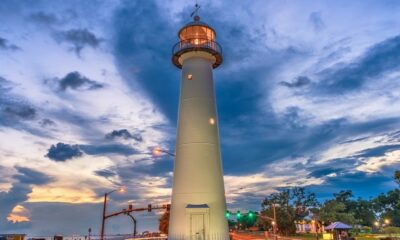
FatCamera/E+ via Getty Images
Colin Gordon, University of Iowa
Republicans in the U.S. Senate are sparring over their version of the multitrillion-dollar budget and immigration bill the House of Representatives passed on May 22, 2025.
Some GOP senators are insisting on shrinking the budget deficit, which the House version would increase by about US$3.8 trillion over a decade.
Others are saying they oppose the House’s cost-cutting provisions for Medicaid, the government’s health insurance program for people who are low income or have disabilities.
Despite the calls from U.S. Sen. Josh Hawley of Missouri and a few other Republican senators to protect Medicaid, as a scholar of American social policy I’m expecting to see the Senate embrace the introduction of work requirements for many adults under 65 who get health insurance through the program.
The House version calls for the states, which administer Medicaid within their borders and help pay for the program, to adopt work requirements by the end of 2026. The effect of this policy, animated by the conviction that coverage is too generous and too easy to obtain, will be to deny Medicaid eligibility to millions of those currently covered – leaving them without access to basic health services, including preventive care and the management of ongoing conditions such as asthma or diabetes.
Ending welfare
The notion that people who get government benefits should prove that they deserve them, ideally through paid labor, is now centuries old. This conviction underlay the Victorian workhouses in 19th-century England that Charles Dickens critiqued through his novels.
U.S. Rep. Brett Guthrie, R-Ky., put it bluntly earlier this month: Medicaid is “subsidizing capable adults who choose not to work,” he said.

Charles Edward Miller via Wikimedia Commons, CC BY-SA
This idea also animated the development of the American welfare state, from its origins in the 1930s organized around the goals of maintaining civil order and compelling paid labor. Enforcing work obligations ensured the ready availability of low-wage labor and supported the growing assumption that only paid labor could redeem the lives and aspirations of the poor.
“We started offering hope and opportunity along with the welfare check,” Wisconsin Gov. Tommy Thompson argued in the early 1990s, “and expecting certain responsibilities in return.”
This concept also was at the heart of the U.S. government’s bid to end “welfare as we know it.”
In 1996, the Democratic Clinton administration replaced Aid to Families with Dependent Children, or AFDC, a long-standing entitlement to cash assistance for low-income families, with Temporary Aid for Needy Families, known commonly as TANF. The TANF program, as its name indicates, was limited to short-term support, with the expectation that most people getting these benefits would soon gain long-term employment.
Since 1996, Republicans serving at the state and federal levels of government have pressed to extend this principle to other programs that help low-income people. They’ve insisted, as President Donald Trump put it halfway through his first term, that unconditional benefits have “delayed economic independence, perpetuated poverty, and weakened family bonds.”
Such claims are unsupported. There is no evidence to suggest that work requirements have ever galvanized independence or lifted low-income people out of poverty. Instead, they have punished low-income people by denying them the benefits or assistance they require.
Work requirements haven’t worked
Work requirements have consistently failed as a spur to employment. The transition from the AFDC to TANF required low-income families to meet work requirements, new administrative burdens and punitive sanctions.
The new work expectations, rolled out in 1997, were not accompanied by supporting policies, especially the child care subsidies that many low-income parents with young children require to hold a job. They were also at odds with the very low-paying and unstable jobs available to those transitioning from welfare.
Scholars found that TANF did less to lift families out of poverty than it did to shuffle its burden, helping the nearly poor at the expense of the very poor.
The program took an especially large toll on low-income Black women, as work requirements exposed recipients to long-standing patterns of racial and gender discrimination in private labor markets.
Restricting access to SNAP
Work requirements tied to other government programs have similar track records.
The Supplemental Nutrition Assistance Program, which helps millions of Americans buy groceries, adopted work requirements for able-bodied adults in 1996.
Researchers have found that SNAP’s work requirements have pared back eligibility without any measurable increase in labor force participation.
As happens with TANF, most people with SNAP benefits who have to comply with SNAP work requirements are already working to the degree their personal circumstances and local labor markets allow.
The requirements don’t encourage SNAP recipients to work more hours; they simply lead people to be overwhelmed by red tape and stop renewing their SNAP benefits.
Failing in Arkansas
The logic of work requirements collapses entirely when extended to Medicaid.
Red states have been pressing for years for waivers that would allow them to experiment with work requirements – especially for the abled-bodied, working-age adults who gained coverage under the Affordable Care Act’s Medicaid expansion.
The first Trump administration granted 13 such waivers for what it saw as “meritorious innovations,” building “on the human dignity that comes with training, employment and independence.”
Arkansas got the furthest with adding work requirements to Medicaid at that time. The results were disappointing.
“We found no evidence that the policy succeeded in its stated goal of promoting work,” as one research team concluded, “and instead found substantial evidence of harm to health care coverage and access.”
The Biden administration slowed down the implementation of these waivers by directing the Centers for Medicare and Medicaid Services to suspend or stem any state programs that eroded coverage. Meanwhile, state courts consistently ruled against the use of Medicaid work requirements.
In Trump’s second term, Iowa, Arizona and at least a dozen other states have proposed “work requirement” waivers for federal approval.
Trying it again
The waiver process is meant to allow state experiments to further the statutory objectives of the Medicaid program, which is to furnish “medical assistance on behalf of families with dependent children and of aged, blind, or disabled individuals, whose income and resources are insufficient to meet the costs of necessary medical services.”
On these grounds, the courts have consistently held that state waivers imposing work requirements not only fail to promote Medicaid’s objectives but amount to an arbitrary and capricious effort to undermine those objectives.
“The text of the statute includes one primary purpose,” the D.C. Circuit ruled in 2020, “which is providing health care coverage without any restriction geared to healthy outcomes, financial independence or transition to commercial coverage.”
Changing Medicaid in all states
The House spending bill includes a work requirement that would require all able-bodied, childless adults under 65 to demonstrate that they had worked, volunteered or participated in job training for 80 hours in the month before enrollment.
It would also allow states to extend such work requirements to six months and apply the new requirements not just to Medicaid recipients but to people who get subsidized health insurance through an Affordable Care Act exchange.
If passed in some form by the Senate, the House spending bill would transform the landscape of Medicaid work requirements, pushing an estimated 4.8 million Americans into the ranks of the uninsured.
Colin Gordon, Professor of History, University of Iowa
This article is republished from The Conversation under a Creative Commons license. Read the original article.























































